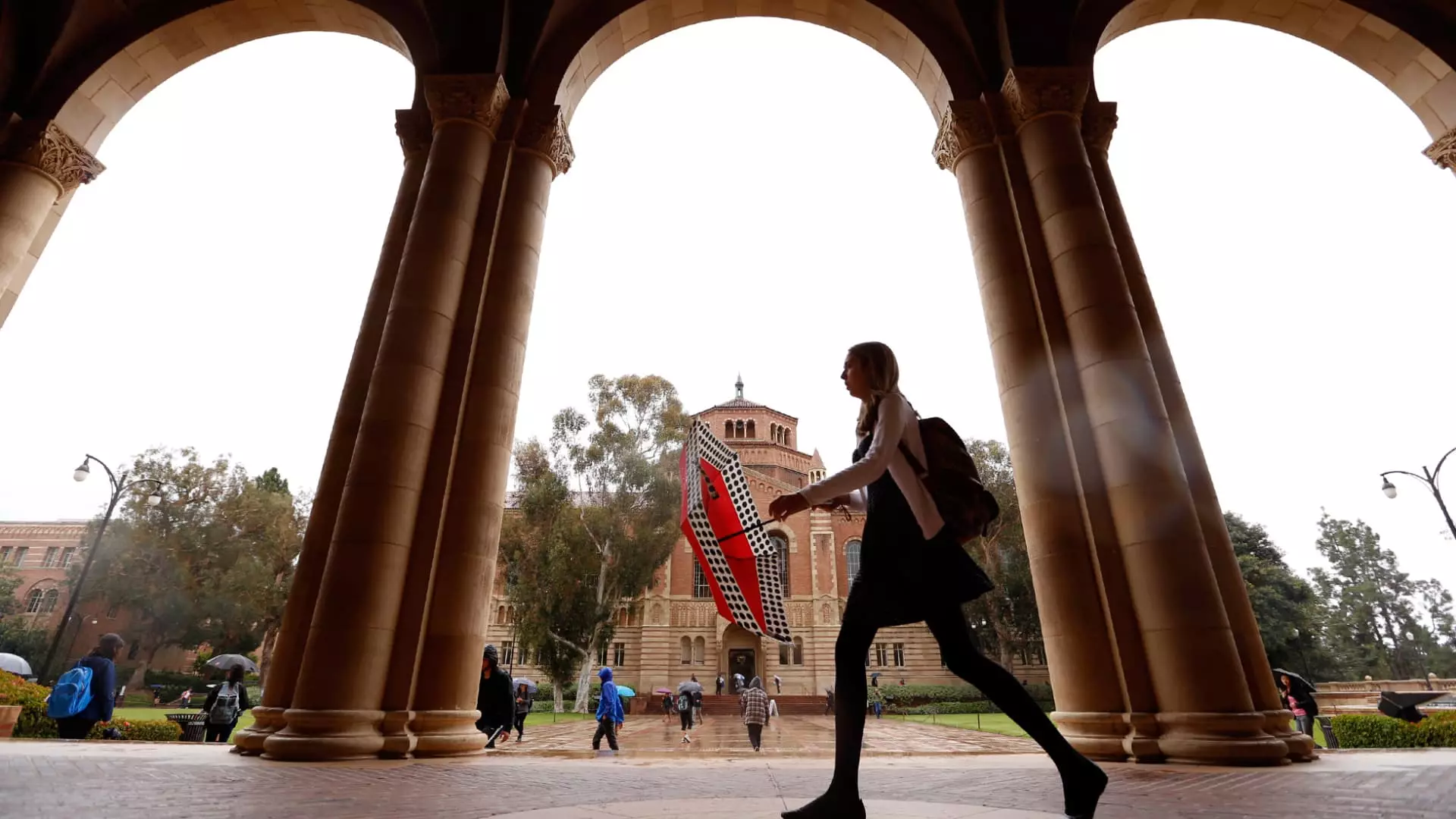In recent years, the dynamics of higher education have experienced profound shifts, reflecting broader economic realities and changing societal attitudes. The increasing eligibility for federal financial aid has not corresponded with a significantly larger segment of high school graduates opting for four-year degrees. Instead, various studies indicate that the path to higher education is becoming increasingly exclusive, favoring those who can afford the exorbitant costs that come with it. Recent statistics, especially from the National Student Clearinghouse Research Center, provide valuable insights into this troubling trend.
Although overall undergraduate enrollment has seen a modest rise, a concerning 5% decrease in the number of first-year students has been recorded this fall compared to the previous academic year. This marks the first significant drop in freshman enrollment since the onset of the COVID-19 pandemic. Doug Shapiro, the executive director of the National Student Clearinghouse Research Center, highlighted the impact of this decrease, particularly among four-year institutions, which predominantly serve low-income students. These institutions saw an alarming drop of over 10% in first-year enrollments, indicating a potential crisis in accessibility to higher education for economically disadvantaged individuals.
The Free Application for Federal Student Aid (FAFSA) has undergone modifications aimed at enhancing access to financial support through Pell Grants, which provide crucial aid based on financial need. New data from the Department of Education indicates that 10% more students are positioned to receive these grants this year, opening doors for low- and middle-income families. However, despite this positive news, it is crucial to note that the number of Pell Grant recipients has seen a significant decline over the past decade. From a peak of 9.4 million recipients in the 2011-12 academic year, the figure has plummeted to 6.4 million for the 2023-24 academic year, as reported by the College Board.
The rising cost of education juxtaposed with stagnant Pell Grant amounts raises questions about financial feasibility for many families. For instance, while the maximum Pell Grant award increased to $7,395 in the 2023-34 academic year, tuition and other related expenses at private colleges have surged to an average of $58,600—a significant leap from previous years. In-state public universities are also seeing rising costs, putting substantial pressure on families trying to finance higher education.
Despite the intention behind FAFSA’s simplification to boost Pell Grant availability, many experts caution that the process has inadvertently thwarted efforts to make financial aid more accessible. Frustration surrounding the application process is rampant, with 45% of college applicants reporting dissatisfaction last year. More alarmingly, some of these students opted for community colleges or technical schools instead, a trend reflected in a Jenzabar/Spark451 survey where 12% of students cited FAFSA challenges as a determining factor in their educational choices.
As the process remains convoluted and burdensome, students may be deterred from seeking the aid they require to pursue four-year degrees. This growing trend of declining enrollment in traditional university settings coincides with heightened awareness regarding the efficacy of obtaining a degree, given the rising student debt crisis and an evolving job market.
The skepticism surrounding higher education and its return on investment is palpable among current students and prospective graduates. Jamie Beaton, co-founder of Crimson Education, articulates a collective apprehension towards the tangible value of a degree. As more students weigh the financial implications against anticipated career benefits, there is a noticeable pivot towards alternative educational paths such as certificate programs and shorter-term accreditations. Enrollment in these alternatives has surged by 7.3%, indicating a significant shift in priorities among the student population.
The landscape of higher education is undoubtedly in flux. With rising costs, adapting student priorities, and significant challenges in the financial aid process, it is imperative for institutions and policymakers to address these concerns. The importance of fostering an accessible and sustainable educational model cannot be overstated. As we move forward, addressing these issues will be crucial to ensuring that higher education remains a viable and beneficial pathway for all students, irrespective of their socioeconomic backgrounds. The future of education hinges on our ability to adapt and respond to these rapidly evolving needs.

